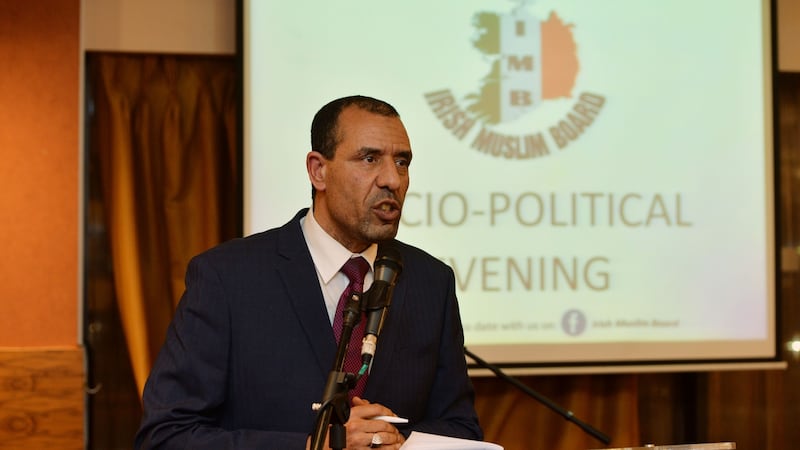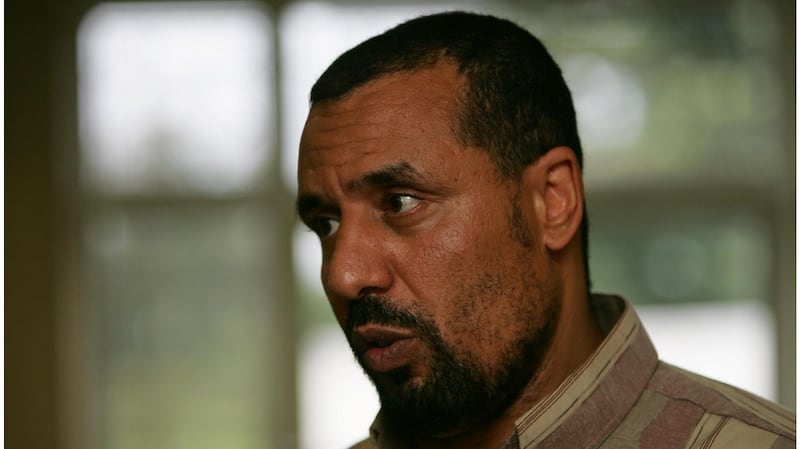In May 2008, the then minister of state for integration, Conor Lenihan, launched a document with the catchy title Migration Nation. It was, as he claimed, recognition "that a key challenge facing government and Irish society is the imperative to integrate people of different cultures, ethnicity, language and religion so that they become the new Irish citizens of the 21st century".
Almost a decade on, essentially nothing has been done by the State to meet this “imperative”.
In a society in which 17 per cent of people were born outside the State and 12 per cent are classed as immigrants, official policy has been, in effect, “Ah sure, it’ll be grand.”
It is only when something dramatic happens – as when Dr Ali Selim of the Islamic Cultural Centre of Ireland makes highly ambivalent remarks about female genital mutilation – that the problems of integration acquire any political visibility.
There is nothing unusual about Irish governments ignoring their own "key challenges", but the case of Migration Nation is particularly spectacular. Just a few months after its publication, the same Fianna Fáil government closed down the only official body that was meant to be dealing with the integration of new communities, the National Consultative Committee on Racism and Interculturalism (NCCRI).
The excuse was that the public finances were collapsing as the great Irish bubble burst. But the axing of NCCRI saved a meaningless €600,000 a year.
There was, rather, a feeling that having a policy on integration was like flying to New York for the Christmas shopping or buying an apartment in Bulgaria – one of those mad Celtic Tiger indulgences that had led us into such dire straits. And in any case, wouldn’t most of the immigrants just go home now the country was broke?
The incoming Fine Gael/Labour government in 2011 certainly seemed to think so: it silently abolished the office of minister of state for integration. The Interdepartmental Group on Integration (bringing together 12 government departments, the Central Statistics Office and An Garda Síochána) was always a half-hearted affair – it met a grand total of three times. But it simply ceased to meet at all under the new government.
Likewise, the so-called Ministerial Council on Migrant Integration held four regional meetings in October and November 2010. It seems then to have disappeared off the face of the Earth.
Promoting integration
Migration Nation had proposed the establishment of new structures for creating and implementing policy in this area. A curt statement issued by the so-called Office for the Promotion of Migrant Integration within the Department of Justice reads: "With regard to new structures and co-ordinating mechanisms, it is not now proposed to establish the three new bodies referred to in Migration Nation because such a move would be inappropriate in current circumstances when State bodies are being rationalised or abolished."
This Office for the Promotion of Migrant Integration itself seems to be a Potemkin village, a facade with nothing behind it. Its last listed activity is for December 19th, 2013: “Exchange of views with NGOs on racist crime.”
Its website has a section called Latest News. Under this heading are the words “nothing found”. It also has a section called Legislation. Its entire content is the disarmingly honest statement: “There is no legislation specifically relating to immigrant integration in Ireland.”
Admittedly, it is true that a year ago, in February 2017, the then justice minister Frances Fitzgerald launched a new official document to replace the long-abandoned Migration Nation. It is called, inspiringly, Migrant Integration Strategy: A Blueprint for the Future. And it is astonishingly thin.
Its entire content is the disarmingly honest statement: 'There is no legislation specifically relating to immigrant integration in Ireland'
The body of the document consists of 30 pages of very large writing. There is no analysis of Irish society now, of the rapid transition from being one of the most monocultural societies in the developed world to being one of the most open, of how Ireland is going to face the challenge of developing a public realm in which everyone can participate equally regardless of ethnicity or religion.
The key section, “What the Strategy Proposes to Do” is 10 pages, much of it filled with fine but broad aspirations like “integration issues to be mainstreamed” across all government departments or “factual material will be made available to enable migrants to learn about Ireland, its history, culture and so on”.
The most obvious response to most of it is – you mean we’re not doing that already?
Anti-Islamic sentiment
Much more striking though is what is not there. As the controversy over Ali Selim’s remarks on female circumcision show, the integration of Muslims into Irish society is a crucial challenge. The Muslim population is small but growing rapidly, from 49,000 to 63,000 between 2011 and 2016.
Everybody knows that the way this plays out has a political and social significance far beyond the numbers – anti-Islamic sentiment is being exploited all over Europe to feed reactionary movements.

Yet the Government’s sole strategy document on integration has one single occurrence of the words Muslim or Islam: “Radicalisation has been a particular issue for other European societies where ideologies that seek to undermine the state have prompted some young people, particularly second-generation Muslim immigrants, to undertake terrorist actions. The risk of radicalisation leading to terrorist activity is a risk for all societies.”
And that’s it: the children of Irish Muslims are of interest because they might “undertake terrorist actions”. Imagine how Irish people would have felt if the British government had published a strategy on integration that mentioned immigrants of Irish ethnicity only as potential recruits for the IRA.
Why this vacuum? Because we can’t talk about religion. The Irish State, since its foundation, has a profound problem with the place of religion in collective identity.
The Irish State, since its foundation, has a profound problem with the place of religion in collective identity
In principle, Ireland has always been a democracy in which the rights and duties of citizens are not dependent on their religious faith. In practice, of course, this has never been true.
For most of the history of the State, Catholicism was regarded as a key marker of belonging. The “others” – Protestants, Jews – could be accommodated as exceptions to the norm. The other “others” – atheists, agnostics – didn’t matter. Ireland, with its talent for double-think, muddled along through these contradictions.
Decline of Catholicism
But the combination of large-scale inward migration of people of different faiths, cultures and ethnicities, the slow decline of Catholicism as the default norm of Irish identity and the rise of different forms of religious scepticism and non-belief is making it impossible to muddle through.
The very Irish twist to the tale, however, is that the official response is that we should muddle through our inability to muddle through. It’ll be grand.
If there were a vague seriousness about having a coherent strategy for integration, the first thing we would have to deal with is the persistence of a sectarian education system. Over 90 per cent of primary schools are under Catholic patronage, and Educate Together multidenominational schools are being actively prohibited by the State from expanding lest they threaten this hegemony.
So what does the Government’s 2017 strategy document have to say about the tensions inherent in forcing Muslim or atheist or Hindu kids to attend Catholic schools? Nothing.

“Current school enrolment policies will be monitored over time to assess their effect on migrant students.” What does that mean? Nothing.
What, for example, is the State’s policy on whether or not Muslim girls attending publicly funded schools should be allowed to wear the hijab in class?
The single answer the State has given to this question is a decade old. It is a short statement issued in September 2008 by Conor Lenihan and then minister for education Batt O’Keeffe. Its bottom line is: “The current system, whereby schools decide their uniform policy at a local level, is reasonable, works and should be maintained.”
Translation: you’re on your own, folks.
The statement recommends that full-face coverings should not be allowed, but even this is just a suggestion.
Secular republic
This is not mere laziness. To think about the wearing of the hijab or any other non-Christian religious garments or symbols in schools, one would have to think about what kind of spaces those schools are supposed to be.
Are they arenas for the promulgation of a particular religion? Or are they safe, neutral spaces where every child is welcomed as an equal? Do those schools serve a church or a secular republic?
But the State doesn’t want to think about this because it is deeply engaged in double-think. Legally and officially, the schools are religious spaces, structured around faith-formation. But it is necessary to maintain the pretence that they are public institutions in which everyone has the same rights. The way to deal with this contradiction is to pretend that it does not exist.
The consequences of this double-think are rather paradoxical. The State refuses to integrate people by creating a secular republic in which all participate as equal citizens rather than as members of specific identity groups. This encourages a particularly flabby kind of multiculturalism: to each his own.
Legally and officially, schools are religious spaces, structured around faith-formation. But it is necessary to maintain the pretence that they are public institutions in which everyone has the same rights
Let the Catholics interact with basic services like education and healthcare as Catholics, the Muslims as Muslims, the Presbyterians as Presbyterians and so on.
It sounds nice and tolerant. But what happens when a Muslim academic like Ali Selim seems to suggest that female genital mutilation is sometimes a medical necessity? Is it okay for people to encourage FGM? Is it okay, to take a less extreme example of Ali Selim’s previously stated views, to insist that Muslim girls not be taught music in school or have their access to sports severely limited?
What happens when people (usually men) appeal to their “culture” as a greater authority than the rights of women and children in Irish law and practice?
Special exemptions
A secular republic has a pretty good answer to these questions: the law doesn’t care about your religion or ethnicity, and “culture” does not excuse domination. Ours, it says, is a state in which public services and institutions treat everybody the same – discrimination is outlawed but so are claims for special exemptions.
But the Irish State can’t give these answers. It is patently not a state whose institutions – most obviously its schools – treat everyone equally. It is in a very weak position when it comes to insisting – as it should – that nobody gets to play the religious card in claiming privileges or opting out of common obligations and standards.
This is why the State chooses to do virtually nothing about a task of integration that it recognised a decade ago as one of the most urgent in Irish society. Creating a secular republic to which people of all identities can fully belong is just too much trouble. It demands a clarity of purpose to which the State remains allergic.
It is easier for the moment to drift along and hope that the consequences of the failures of integration that haunt so much of Europe will never be felt here.











